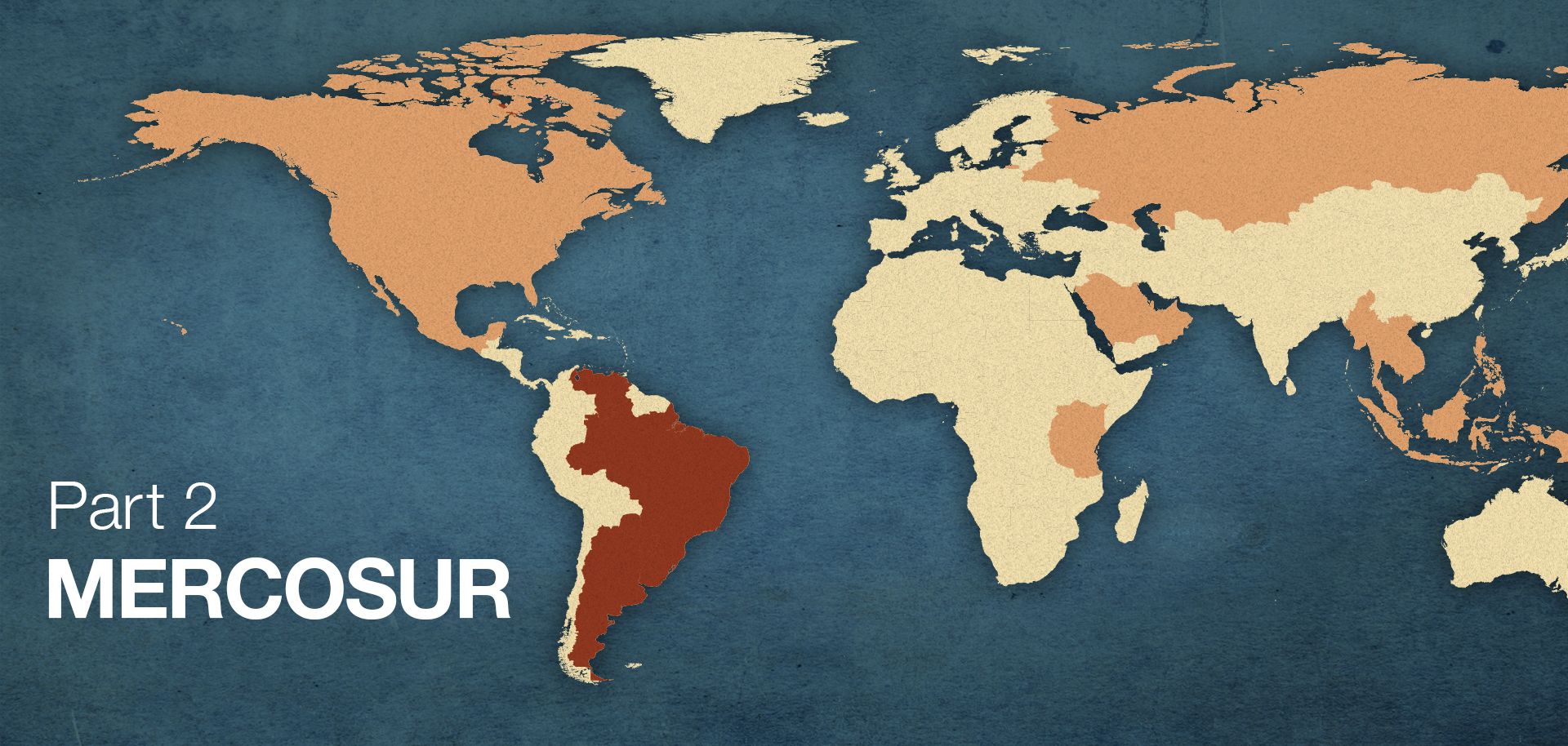ASSESSMENTS
Mercosur: At the Mercy of Other Markets
Sep 13, 2016 | 09:15 GMT

(Stratfor)
Summary
Editor's Note: This is the second installment of a seven-part series examining how the world's regional economic blocs are faring as the largest of them — the European Union — continues to fragment.
The Common Market of the South, better known by its Spanish acronym Mercosur, emerged in the early 1990s as a small bloc with a big goal: to ease the movement of people and goods throughout South America. The continent's leaders hoped that by bringing together South America's biggest economies, Brazil and Argentina, they could someday unite the entire Southern Cone. Much like France and Germany in the European Union, Brazil and Argentina have led their bloc since its inception, albeit unequally. (Because the Brazilian economy is notably larger than Argentina's, Brasilia has far greater clout within Mercosur than Buenos Aires.) By comparison, the economies of Mercosur's three remaining members — Venezuela, Uruguay and Paraguay — are too small or too specialized to claim much influence over the bloc's decision-making.
Given Brazil and Argentina's advanced economic development relative to their fellow Mercosur members, the distribution of power within the bloc is unlikely to change any time soon. The same cannot be said for Mercosur's policies. With demand from the bloc's largest buyers stagnating or declining, Mercosur members are pushing to open the traditionally protectionist trade union to new markets. But doing so would also risk inciting protests as local industries unaccustomed to external competition struggle to adapt, a pill few South American governments are eager to swallow. Even so, Mercosur will continue to mull the idea of liberalizing its policies in the coming decade, leaving the bloc's fate to fluctuations in commodity prices and regional trade in the meantime.
Subscribe Now
SubscribeAlready have an account?
